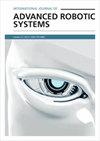Stakeholders’ perspectives on safety-related human–robot collaborative scenarios
IF 2.1
4区 计算机科学
Q2 Computer Science
International Journal of Advanced Robotic Systems
Pub Date : 2023-09-01
DOI:10.1177/17298806231200095
引用次数: 0
Abstract
Safety plays a key role when implementing collaborative robots (cobots) in human-shared workspace scenarios. Nevertheless, the significance and understanding of safety-related aspects may significantly vary with different stakeholders’ perspectives. In particular, there is often a misconception that cobots are inherently safe with the result of significantly underestimating the need of adopting adequate safety measures and features for the deployment of collaborative robots in industrial and non-industrial frames. Accordingly, this article develops an in-depth analysis of the stakeholders and their stakes in human–robot collaboration in the manufacturing industry with particular attention to the safety aspects. The proposed approach consists of a field study, with an online questionnaire and structured interviews, directed at the main stakeholders. The field study results are presented and compared with insights from two recent explorative studies. Finally, careful analysis and discussion is provided. This research focuses on three topics: (i) the specific phases in the collaborative robot application cycle, (ii) the stakeholders that are involved in each phase, and (iii) the stakes that affect the stakeholders in general, and specifically the role of safety within these stakes. The findings show that awareness of safety issues is still jeopardized between stakeholders. In addition, key stakeholders still significantly underestimate safety-related issues when implementing cobots in new production lines. This implies the need for objective assessment tools that can systematically address and assess all safety-related aspects. This study provides industry practitioners with a broader view of how different stakeholders regard safety-related aspects in the cobot life cycle. This will enable more informed decision-making when implementing cobot solutions and potentially avoid unconsidered safety risks later on. This article also adds to the scant research on the role of each stakeholder in human–robot collaboration.利益相关者对安全相关的人机协作场景的看法
在人类共享的工作空间场景中实现协作机器人(cobots)时,安全性起着关键作用。然而,安全相关方面的重要性和理解可能会因不同利益相关者的观点而有很大差异。特别是,通常存在一种误解,认为协作机器人本质上是安全的,其结果是大大低估了在工业和非工业框架中部署协作机器人时采用适当的安全措施和功能的需求。因此,本文深入分析了制造业中人机协作的利益相关者及其利益,并特别关注安全方面。拟议的方法包括针对主要利益相关者的实地研究、在线问卷和结构化访谈。介绍了实地研究结果,并与最近两项探索性研究的见解进行了比较。最后,进行了详细的分析和讨论。本研究主要关注三个主题:(i)协作机器人应用周期的特定阶段,(ii)每个阶段涉及的利益相关者,以及(iii)一般影响利益相关者的利害关系,特别是安全在这些利害关系中的作用。调查结果表明,利益相关者之间对安全问题的认识仍然受到损害。此外,在新生产线上实施协作机器人时,关键利益相关者仍然严重低估了与安全相关的问题。这意味着需要客观的评估工具,能够系统地处理和评估所有与安全相关的方面。本研究为行业从业者提供了一个更广泛的视角,了解不同的利益相关者如何看待协作机器人生命周期中与安全相关的方面。这将有助于在实施协作机器人解决方案时做出更明智的决策,并潜在地避免以后未考虑的安全风险。本文还补充了对每个利益相关者在人机协作中的作用的不足研究。
本文章由计算机程序翻译,如有差异,请以英文原文为准。
求助全文
约1分钟内获得全文
求助全文
来源期刊
CiteScore
6.50
自引率
0.00%
发文量
65
审稿时长
6 months
期刊介绍:
International Journal of Advanced Robotic Systems (IJARS) is a JCR ranked, peer-reviewed open access journal covering the full spectrum of robotics research. The journal is addressed to both practicing professionals and researchers in the field of robotics and its specialty areas. IJARS features fourteen topic areas each headed by a Topic Editor-in-Chief, integrating all aspects of research in robotics under the journal''s domain.

 求助内容:
求助内容: 应助结果提醒方式:
应助结果提醒方式:


